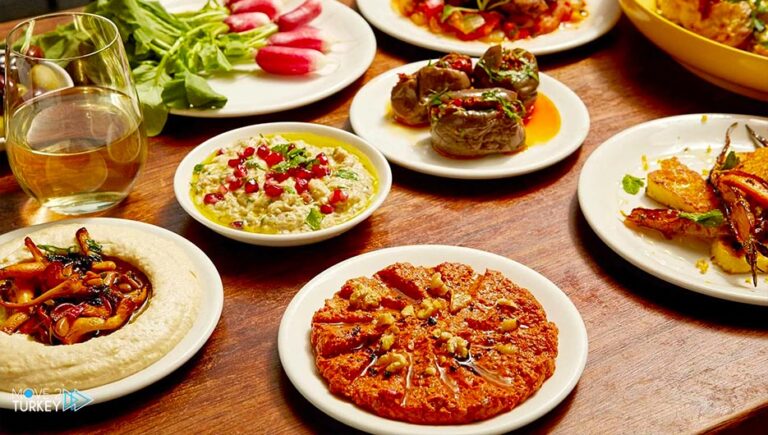Introduction: Exploring Syrian Street Food
Syrian cuisine is a reflection of its diverse cultural history. Syrian street food, in particular, is a melting pot of flavors and aromas that has been influenced by its neighboring countries and occupied regions. From the famous shawarma to the lesser-known sambusak, Syrian street food is a culinary adventure that is worth tasting.
1. Shawarma: The Classic Syrian Street Food
Shawarma is perhaps the most famous Syrian street food. It consists of marinated meat, typically chicken or lamb, that is roasted on a spit and sliced thinly. The meat is then wrapped in a pita bread, along with vegetables and condiments such as hummus, tahini, and pickles. Shawarma can be found at every street corner in Syria and is a go-to option for locals and tourists alike.
2. Manakish: A Flavorful Flatbread
Manakish is a traditional Syrian flatbread that is topped with a mixture of thyme, sesame seeds, and olive oil. It can also be filled with cheese, za’atar, or ground meat. Manakish is a popular breakfast food in Syria and is often eaten with a cup of tea or coffee. It is also a great snack to grab on the go and can be found at bakeries and food stalls across the country.
3. Falafel: A Vegetarian Delight
Falafel is a popular vegetarian street food in Syria. It is made from ground chickpeas, herbs, and spices, and is deep-fried until crispy. Falafel is typically served in a pita bread, along with vegetables and condiments such as hummus and tahini. It is a great option for vegetarians and meat-lovers alike, and can be found at most street food vendors in Syria.
4. Kibbeh: A Meat Lover’s Dream
Kibbeh is a meat dish that is made from ground lamb or beef, mixed with bulgur wheat and spices. The mixture is then formed into patties or balls and deep-fried until crispy. Kibbeh is often served with a side of yogurt or tahini sauce and is a favorite among meat-lovers in Syria. It can be found at traditional Syrian restaurants or street food stalls.
5. Sambusak: A Savory Pastry
Sambusak is a savory pastry that is filled with a mixture of meat, onions, and spices, and deep-fried until crispy. It is a popular street food in Syria and can be found at bakeries and food stalls across the country. Sambusak is a great snack to grab on the go and is often eaten with a side of yogurt or tahini sauce.
Conclusion: A Culinary Adventure in Syrian Street Food
Syrian street food is a rich and flavorful experience that should not be missed. From the classic shawarma to the lesser-known sambusak, Syrian street food offers something for everyone. Whether you are a meat-lover or a vegetarian, there is a Syrian street food that will satisfy your taste buds. So, if you ever find yourself in Syria, be sure to try out some of these must-try street foods.

